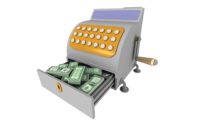What makes a branch profitable?

A monster distribution chain CEO asked for ideas to include in a regression analysis. They had hired a consulting firm for $500,000 to co-identify 96 financial factors to correlate with branch return on assets. Thinking of some of the prioritized factors in my kinetic chain model, I asked whether they had:
-
One number to score the quality and years-in-place of the branch managers (management)?
-
One number for share of the No.1 target customer segment (strategy)?
-
The number of credits per thousand line items processed (systems)?
-
The number for gross profit dollars per full-time-equivalent employee (people)?
For confused faces, I explained my kinetic chain model. All agreed with my general assumptions, but the project manager complained that this seemed like a lot of extra, confusing work for imprecise guesstimates.
I suggested that:
-
Invented, approximate scores were better than pretending that all branch managers and customer segment shares were the same.
-
Theories worth validating and creating valuable insights take some novel work.
-
Potentially, none of the 96 metrics were as important as the one question of who was running the branch.
-
We do a 30-minute brainstorming session on how to create and get these new numbers.
We did the session. Good-enough solutions emerged. The team was on the hook. We found that the 96 factors had no helpful correlations, but the metrics for management, systems and people all had strong correlations. Additionally, the strategy metric had a weaker correlation, but stomped the easily-gathered 96 factors.
To turn around a weak branch you must insert a zealot to weed out the coasters and hire a few people with a good work ethic. In addition, you must boost service excellence, energy and standards while pursuing a zero errors approach. With fewer errors you will gain lower credits/thousand lines processed, boost your gross profit per full-time employee and improve service reliability for all customers.
Further, you should visit your top 20-plus customers to find ways to focus on competitors’ weaknesses or oversights and to uncover the branch’s accidental, hidden and historic service strengths. But, winning a bigger share of big accounts does not guarantee they will have a profitable average order size. To consolidate unnecessary, unprofitable small orders, you need a cost-to-serve toolkit plus education.
The world of metrics
There are limits to financial analysis, which measures what’s easy to see and count in the past. The “numbers” all are symptomatic outcomes of your controllable input decisions. Using financial reports to be cost-, asset- and cash-flow-efficient is smart, but to uncover financial blind spots use your own invented models and metrics. How do you measure intangibles such as effective strategy, management and systems?
-
Pick a theory for how to measure the causes of your most net-profitable business. Hint: Customers with the greatest volume of highest average gross profit dollars per invoice.
-
Create a cost-to-serve model to zero in on these accounts.
-
Visit them to get insights for experiments to better retain and partner with them.
-
Invent metric(s) for tracking your experiments.
-
Perfect models, fail-safe experiments and tracking metrics can’t be achieved in a dynamic world with inconsistently executing branches. Instead, develop good-enough models, metrics and tracking reports. These will provide better focus and guidance for your theory and help you make consistently better incremental decisions that will statistically increase your odds for better financial outcomes. You also will learn by failing from these small-bet actions.
-
After nailing new value offerings, scale them. Crack more “best” accounts. Expand the moat.
-
Let product promotions that competitors put forward be secondary to service value innovation for your key accounts.
As a by-product of service innovation, you will grow sales, profits and rebates faster.
Looking for a reprint of this article?
From high-res PDFs to custom plaques, order your copy today!






